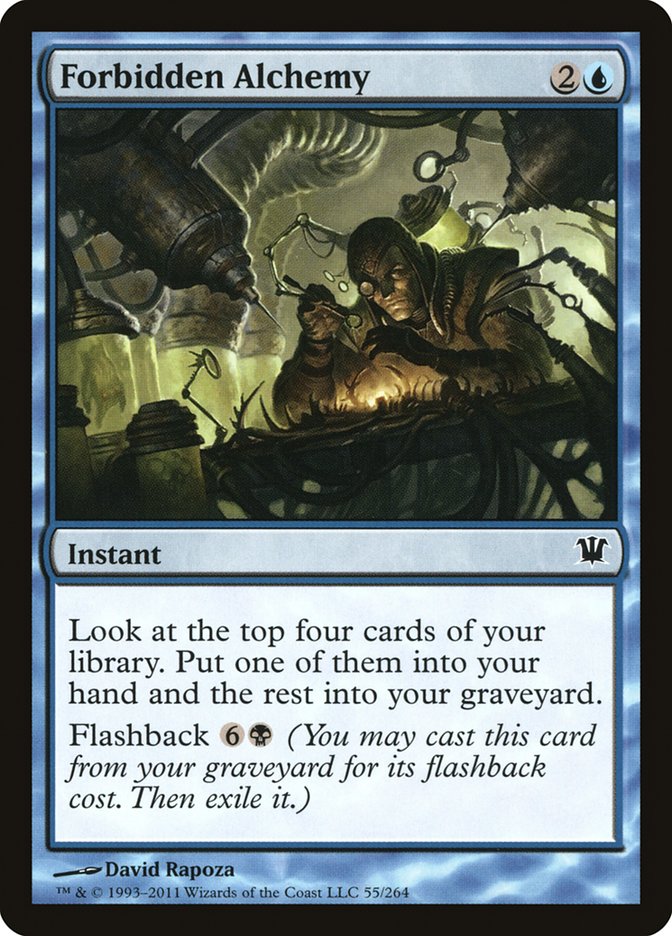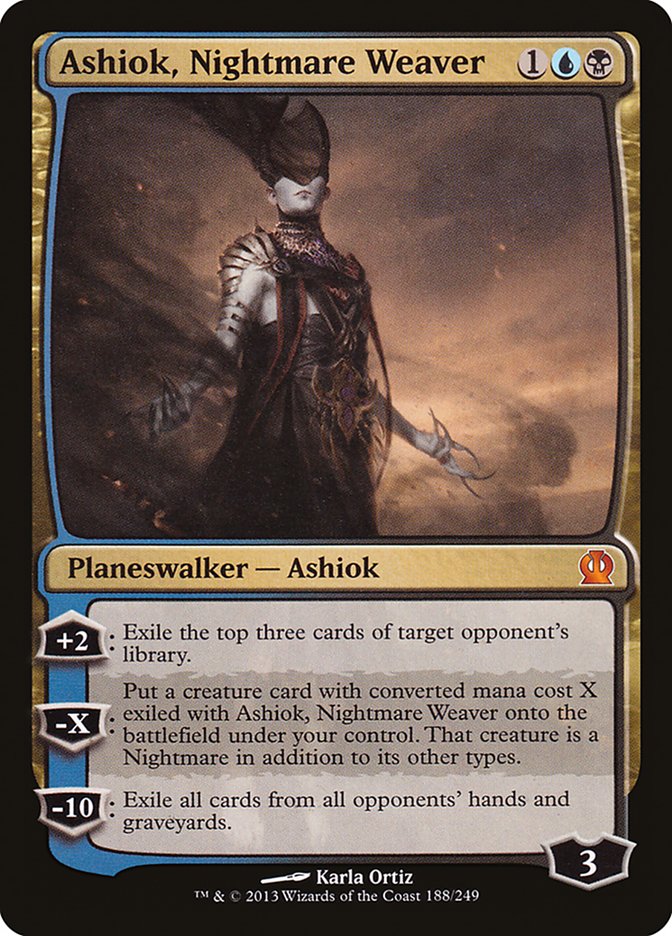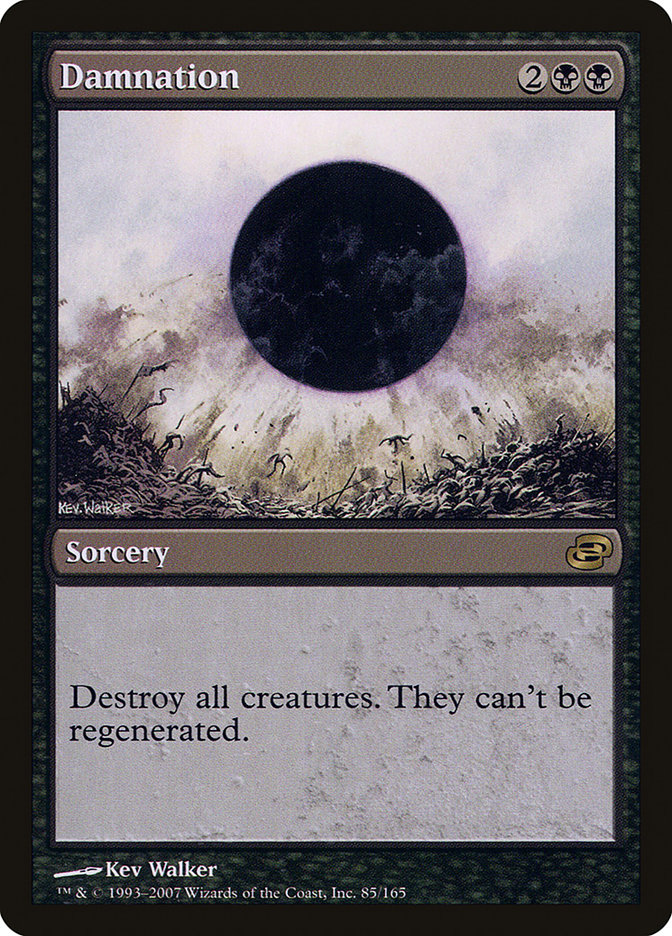This past weekend marked the first ever Modern event with the new Open Series format, and it was a remarkable event. The tournament ended up with 762
players, and I was able to defeat solid competition on the way to taking down the title with Sultai. I have you guys to thank for that, as it was the
readers at home that voted for the deck I played with. Also in that article, I wrote an article defending the current state of Modern. Since the most
recent Pro Tour, there has been a lot of discussion about the format. I was tired of hearing people complain about how good Abzan was, or how there are too
many linear strategies. I wanted to prove that there is more to the format than these two styles of play, so I committed to playing a deck that was off the
beaten path.
As you may remember, the four choices that I presented to you in my last article were U/W Control, Temur Delver, Merfolk, and Sultai. Sultai won by a
landslide and the brewing began. I devoted myself to working hard for this event, since it was an important tournament for a few reasons. Patrick Sullivan
highlighted the main reason, in that I wanted to prove that this game doesn’t always have to be about netdecks. I believe that with enough effort and
practice you can put up good results with the strategy that suits your own personal strengths. For me personally, I’ve come to realize that Esper or Sultai
strategies are the best fit for my own style of play. For someone like Patrick Sullivan, it’s clear that red aggressive strategies are the best fit. After
years of playing these types of strategies, we both have developed a passion for these types of archetypes and have put in extra work in the hopes that we
could succeed with a strategy that we truly enjoy.
In my last article, my message was that if you don’t like Modern, you should just not play it. It felt like a lot of people didn’t understand the message
and instead wanted me to present a solution as to what Wizards of the Coast should ban or unban in order to fix the format. It isn’t our job as players to
figure out whether cards should be banned or not. Instead of wasting time speculating about whether or not Wizards is making the best decisions for the
format, we should instead be focusing on becoming better players, deckbuilders, and strategists.
Before I get into the tournament itself, let’s first take a look at the list I ended up playing:
Creatures (11)
Planeswalkers (3)
Lands (24)
Spells (22)

I worked on this decklist with a few of my friends in the week leading up to the tournament. Michael Segal, Reid Duke, Andy Boswell, and Allen Jackson all
helped with the decklist by contributing ideas and allowing me to bounce ideas off of them. The original list contained both Noble Hierarch and Courser of
Kruphix, however, in a field full of Splinter Twin decks I felt like both card options would be too vulnerable or too low impact to make a real difference.
The other big change that Reid pointed out was the split of Thoughtseize and Inquisition of Kozilek. Even though Thoughtseize is a more powerful card, in a
field where both Burn and Affinity strategies would be prevalent, the loss of two life would often contribute to a loss.
The deck performed extremely well for me, as the gameplan of trading resources then pulling ahead later on worked well against most of my opponents. In the
earlygame you’re looking to either sculpt your hand with Serum Visions or start attacking their hand with your targeted discard spells. After the first
turn, you can start deploying one of your powerful threats in Tarmogoyf or continue with your early defensive spells with Mana Leak or Abrupt Decay. As the
game goes on, Snapcaster Mage and Tasigur, the Golden Fang both provide a great source of card advantage that allow you to pull ahead of your opponent, as
their resources may already be limited. This type of strategy aims to use removal, counterspells, and discard spells in order to trade for the opponent’s
spells at a rate of 1:1 in the earlygame, and then pull ahead through the use of card advantage spells before using one of the finishers to end the game.
The tournament itself went fairly smoothly on Day 1. I faced decks such as Splinter Twin, Affinity, Burn, and Abzan. All of the matches played out as I had
expected, and my sideboard strategy was really on point at fixing any of the weaknesses the list had in game 1. Three copies of Disfigure along with the
two copies of Spellskite and Feed the Clan allowed me to defeat my Burn opponents, while the Night of Souls’ Betrayal and Nature’s Claim specifically
helped against Affinity. The Abzan matchup came down to the card drawing and the two copies of Fulminator Mage in the sideboard, which gave me a great
answer to their man-lands.
Day 2 did not start out as well as Day 1, as I picked up an early draw against Splinter Twin, followed by a loss against Jund. Regardless of these early
setbacks, I managed to pull through and finished the tournament as the third seed heading into the single elimination rounds. From there I faced against
three blue control decks. I played against Jeff Hoogland’s Temur Moon deck in the top 8, Jeff Folinus’ U/R Splinter Twin deck in the top 4, and Seth
Manfield’s U/R Splinter Twin deck in the finals. In all three of these matchups, the card that greatly overperformed for me was Abrupt Decay. The card is
the best option you can have against these decks, since they heavily rely on many different cards with converted mana cost three or less. This is actually
the exact reason why I have a copy of Sower of Temptation in the sideboard. Many different decks rely on their own copies of Abrupt Decay, and Sower of
Temptation is a powerful Mind Control effect that doesn’t die to Abrupt Decay, unlike Threads of Disloyalty.
The thing about this deck is that there aren’t any matchups that are strongly in your favor, but there also aren’t very many matchups that are actively bad
for you. By playing lots of different cards that give you lots of decisions, you are able to truly have the matchups in your own hands. This tournament was
even more difficult due to the amount of high quality players I had to face during the weekend. Between Seth Manfield, Jeff Hoogland, Dan Musser, Ross
Merriam, Ben Green, Robert Pompa, and Andrew Jessup, I knew I wouldn’t be given much room to make mistakes. Overall the tournament was very fun to play in,
and I really felt the love and passion the community has for the Modern format. A new challenge came every round, and the room was full of interesting
matchups and gamestates. Besides the players, what makes Magic even more awesome is how each format is truly different. The existence of multiple healthy
formats allows players to pick and choose what formats they want to play. One player may be happy playing in all the available formats, while another
player may choose to focus on just one format.
Going forward, I figured that many people would have questions about the deck, so I invited players to write in their own questions through Twitter and
other mediums. I picked a few of those questions to answer here, so that you can succeed in your next Modern tournament!
Why Compulsive Research over Forbidden Alchemy? How good was Compulsive Research for you?
The Compulsive Research was one of the MVP cards of the deck. As a singleton card, it was there to help you gain raw card advantage against Abzan
strategies whose goal it is to diminish your resources. Compulsive Research allows you to refuel your hand, as well as to dig for specific cards in certain
matchups. With three copies of Snapcaster Mage, you are also likely to be able to Flashback the spell to allow you to truly pull ahead of your opponent.
You could consider playing two copies if your metagame is full of midrange and control matchups. However, in a more open field where aggressive decks are
prevalent, I think that one is the correct number.
How did you choose Ashiok over the other 3-mana planeswalkers?
With both Liliana of the Veil and Jace Beleren as options, I instead chose Ashiok because the card better fit in with the theme of card advantage. With
Liliana, you have to be very careful against Abzan strategies, since they are likely to have Loxodon Smiter, Wilt-Leaf Liege and Lingering Souls, all of
which make Liliana look pretty embarrassing. The other problem is that the deck plays counterspells, which puts a huge strain on decision making since you
are incentivized to not discard the cards in your hand. Jace Beleren is actually tied for my favorite planeswalker, but I feel that it doesn’t have the
same power level that Ashiok has here. Ashiok allows you to potentially take their Siege Rhino on turn 4 without losing the planeswalker, while Jace
Beleren in the same position would only be able to potentially draw you two cards.
Which card overperformed for you?
The card that overperformed the most for me was Damnation. Creature strategies will pretty much always be popular, and having a catch-all card that can be
used against various strategies is not something that should be overlooked. Even though the card is generally not excellent against Splinter Twin decks,
you can still set up a situation where it will be. It is also your best weapon against decks like Affinity or Infect, since they are prone to
over-committing to the board in their attempt to end the game as quickly as possible. Sideboard cards like this that can be brought in for multiple
matchups have extra value in a format like Modern where the sideboard cards are so important and you are limited to only fifteen.
What changes would you make to the deck going forward?
I would most likely be inclined to cut a Verdant Catacombs and possibly another land for two copies of Quicken. I often found myself boarding out lands
during the course of the tournament, since your Serum Visions do such a great job of finding the cards you need, including lands. The other option
is to keep the land count at 24, but instead, adding two copies of Tectonic Edge, lands that function as spells. The way the deck is currently built, it is
fairly weak to man-lands, and Quicken or Tectonic Edge could really help to fix this weak spot in the deck. Either way, trimming down on lands is a fine
option to consider since you don’t really have an expensive spell in your top end. I previously played Esper strategies in Modern, and the biggest
difference is that the Esper Deck has Sphinx’s Revelation as an incentive to always be playing lands. The Sultai deck doesn’t really have an expensive
curve, and instead, plays a lot of cheap interactive spells. The most expensive card is Tasigur, but by now we all know that that card does not really cost
six. A split of one Quicken and one Tectonic Edge is also an option to replace the previously mentioned lands.
How would you sideboard against some of the popular matchups?
This is a very difficult question that can’t truly be answered since I tend to sideboard differently every match. Normally, articles would post a guide to
sideboarding, but I do not think that would be helpful here. Oftentimes I am sideboarding based on what I saw in the first game and may even sideboard
differently against the same deck during the weekend. For example, in the finals against Seth Manfield, I did not even bring in Spellskite, since I felt
there was a good chance he would attempt to become a control deck that didn’t rely on the combo to win. Although a card like Spellskite has historically
been a counter-measure for cards like Splinter Twin, I tried to think ahead to imagine what decisions my opponent would make between games. In the top 8
rounds, we had decklists, which further cemented my decision to not board in Spellskite. Another example is when you’re playing against Abzan. In some
Abzan decks, the only card that would be affected by Night of Souls’ Betrayal is Lingering Souls, while the card may be more effective against other
versions of the deck that play mana ramp creatures. My best advice to you would be to consider what you saw in the first game and what that might mean
about your opponent’s deck. I would use this information to guide your sideboarding decisions and then adjust for game 3 if necessary.
How bad is Blood Moon for you?
Depending on how many fetchlands you draw and when the Blood Moon comes down greatly determine the impact the card has against you. If you’re ahead on
board, the card is way less impactful than if it resolved when you were behind. Against Splinter Twin decks with Blood Moon, I will often board out Cryptic
Command, since it is impossible to cast with only the two Islands in the entire list. These decks will often also bring in Dispel, which makes it that much
harder to resolve Cryptic Command. With all that being considered, I feel Blood Moon is fine against you but nothing too special. Just remember to fetch
out basic lands when you suspect they are likely to have Blood Moon.
In conclusion, if you are looking for a deck that is unique, fun to play, and gives you a lot of options, then I highly recommend that you investigate
playing this Sultai deck. I would also recommend that you keep a positive attitude towards Modern, as well as Magic in general. There will continue to be
more powerful cards printed, but it is a player’s responsibility to use their skill to overcome these new threats and to have fun doing it.
So how many of you guys are looking to pick up Sultai for your next event? If so, what changes are you planning on making to the deck? Remember this is
just a list that you can base your own off of, and I encourage you to make your own changes. I would love to hear what changes you plan on making to the
deck and how those changes work out for you!





